Magic in Japan: Day 2 in Kyoto

Trip Index:
Introduction
Getting There – JAL First Class
Hotel Review: Ritz-Carlton Tokyo
Guide to Tsukiji Fish Market
Room Service Review: Ritz-Carlton Tokyo
Day in Tokyo
Taking the Shinkansen “Bullet†Train
Hotel Review: Ritz-Carlton Kyoto
Tea at the Ritz-Carlton Kyoto
Day 1 in Kyoto
Day 2 in Kyoto
Room Service Review: Ritz-Carlton Kyoto
Getting to Hiroshima
Hotel Review: Sheraton Hiroshima
Day trip to Miyajima
Day in Hiroshima
St. Regis Osaka
Day in Osaka
I’d had such a great breakfast the day prior at Shinshindo that Day 2 started out exactly the same as before. An early morning walk along the quiet streets of Kyoto, a warm “irasshaimase!” greeting, a delicious breakfast at the restaurant and taking a few pastries to go.
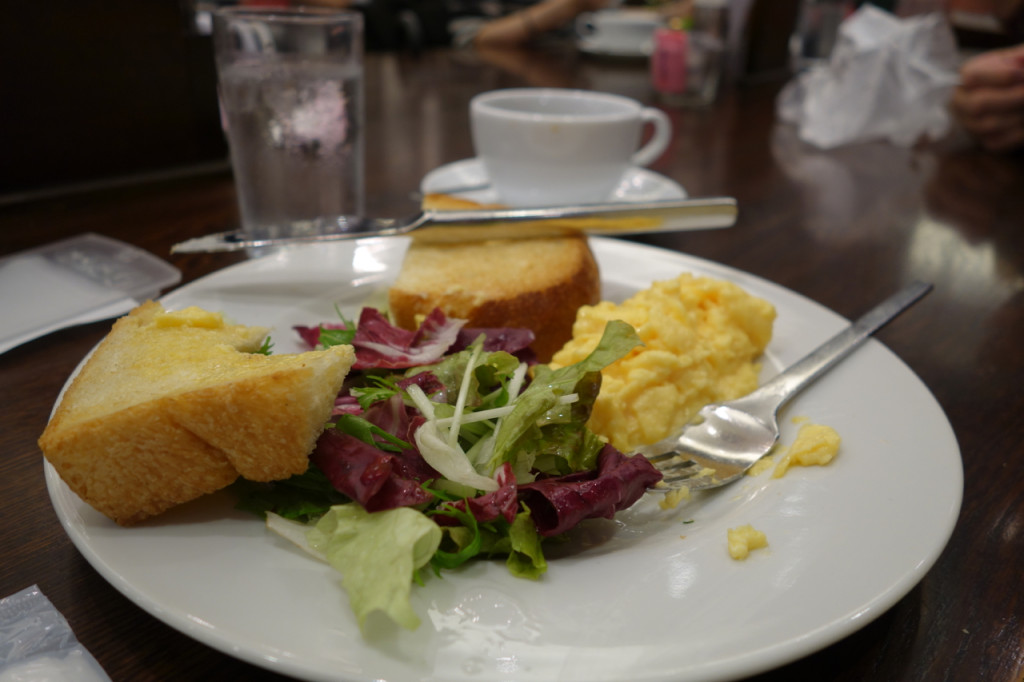
Today though, we were headed to Nijo Castle which was built in 1603 as a residence for shogun Tokugawa Ieyasu and is now a UNESCO World Heritage site. I’d heard about long lines for entry, and since we don’t like standing in lines we got there early. Too early. The ticket booth wasn’t even open yet.
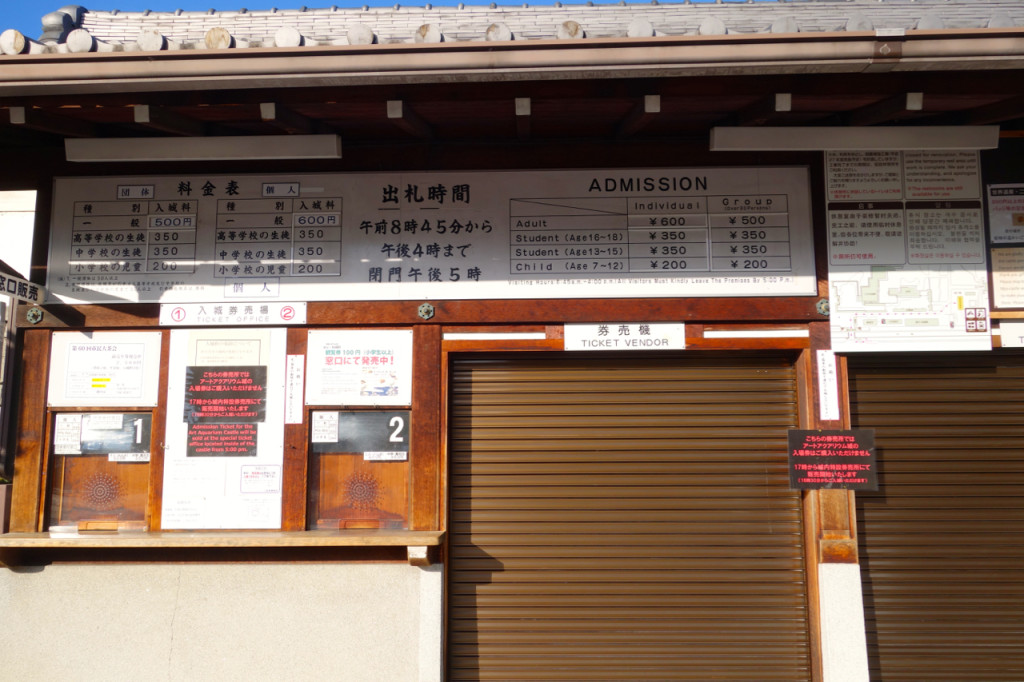
That was ok though, better too early than too late!
Just a block away we found a coffee shop to wait in until opening time. For all you smart readers who will visit Nijo Castle after reading this or already went and figured it out, opening time is 845am except on some Tuesdays when it is closed.
The coffee shop was impeccably clean, and the owner bustled about inside as he carefully cleaned up after each previous guest. As we were finishing up, another gentleman entered the shop, took a newspaper and promptly lit a cigarette to enjoy with his coffee. The room was small so the smell quickly permeated the space. We thanked the owner and left, going back to the ticket booth.
Tickets were ¥600, about 5 USD. As soon as we paid, two noisy buses pulled up near the entrance. The buses unloaded and suddenly there was a long line. Whew, we had gotten tickets just in time.

An information booth was just inside the gate, and we rented an English speaking audio-guide to Ninomaru Palace.
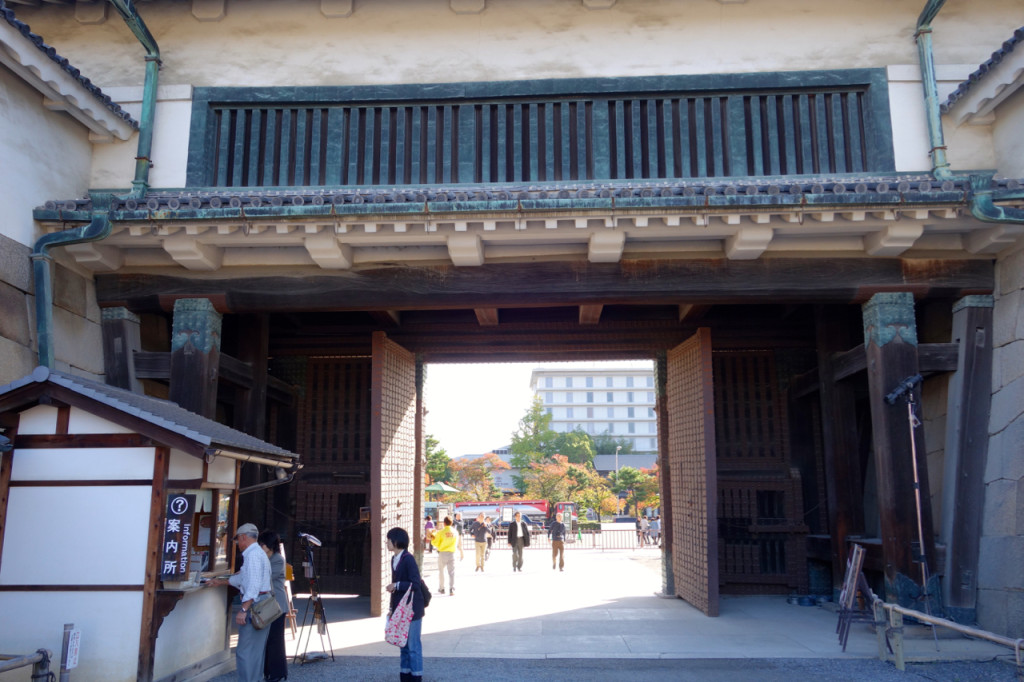
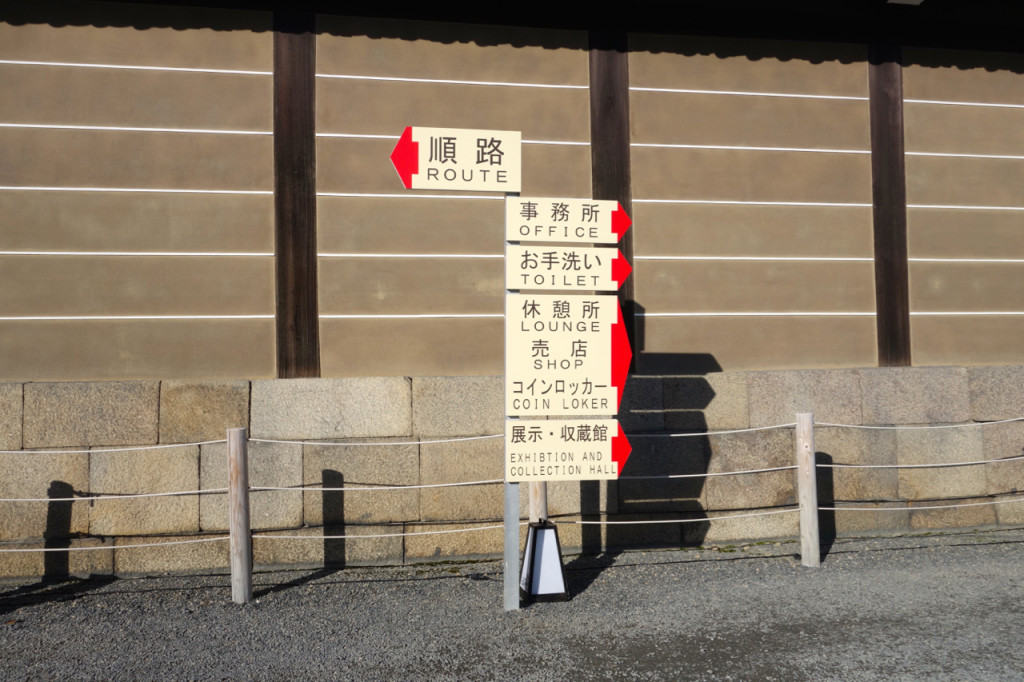
Just inside the palace, we were asked to take our shoes off and either place them in cubbyholes or inside a plastic bag to take with us. This is to protect the flooring of the palace. There is also no photography allowed inside, so I snapped a shot of the outside before heading in.
There were several buildings, and glass mannequins depicting the shogun and his ladies in waiting were interspersed with artwork on the walls and tapestries. Some of the paintings were very interesting, because they were of animals that the painters had never seen before and were using their imagination for. Some ceilings were beautifully ornate, as were some of the screen doors. Several of the rooms were a bit blank though, and although I know I should have been focused on the artwork and the mannequins my favorite part was the squeaky wooden floors.
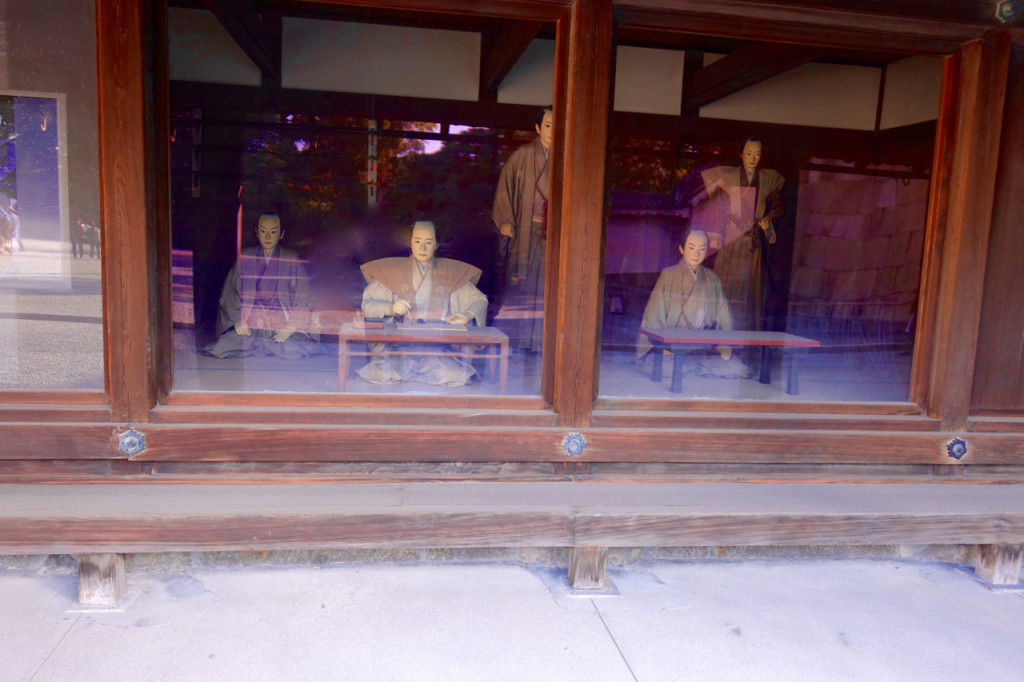
The shogun had had “nightingale flooring” installed in the outer perimeter, which had been made specially to alert security in case of an intruder. The inner corridors for trusted family and staff didn’t have that flooring but the area that all visitors today take is along that path. As we shuffled slowly from building to building, the floors creaked and squeaked and squawked and chirped. It was quite entertaining, and I found myself bouncing from foot to foot a little more than needed just to hear the chirps.
Once finished with the tour and back outside with our shoes on, we visited the Ninomaru Garden which is a traditional Japanese garden. The grounds are quite large so I was glad that a map showed the general outline.
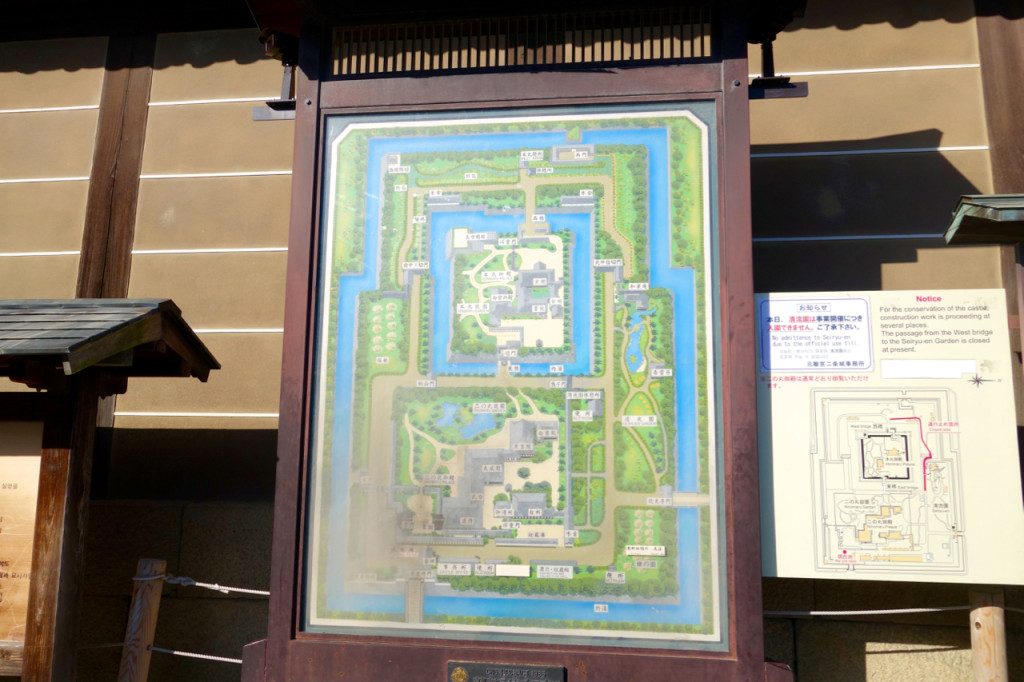
The karamon main gate we walked through was very ornate, and although some tourists rushed through to get to the other side I couldn’t help gazing up in wonder at all the intricate carvings and colors.
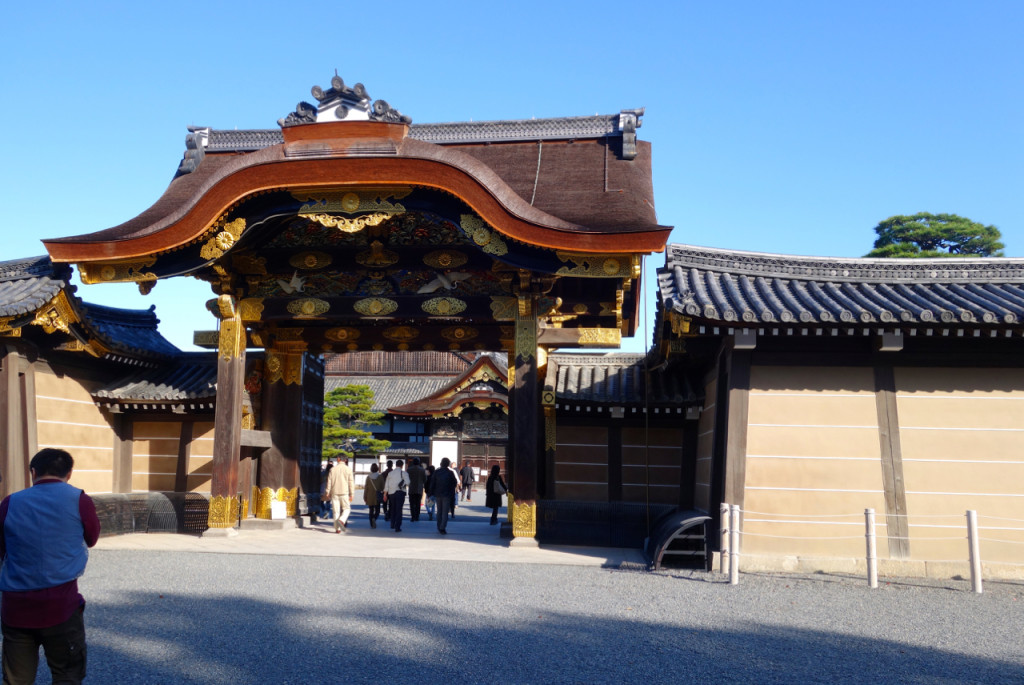
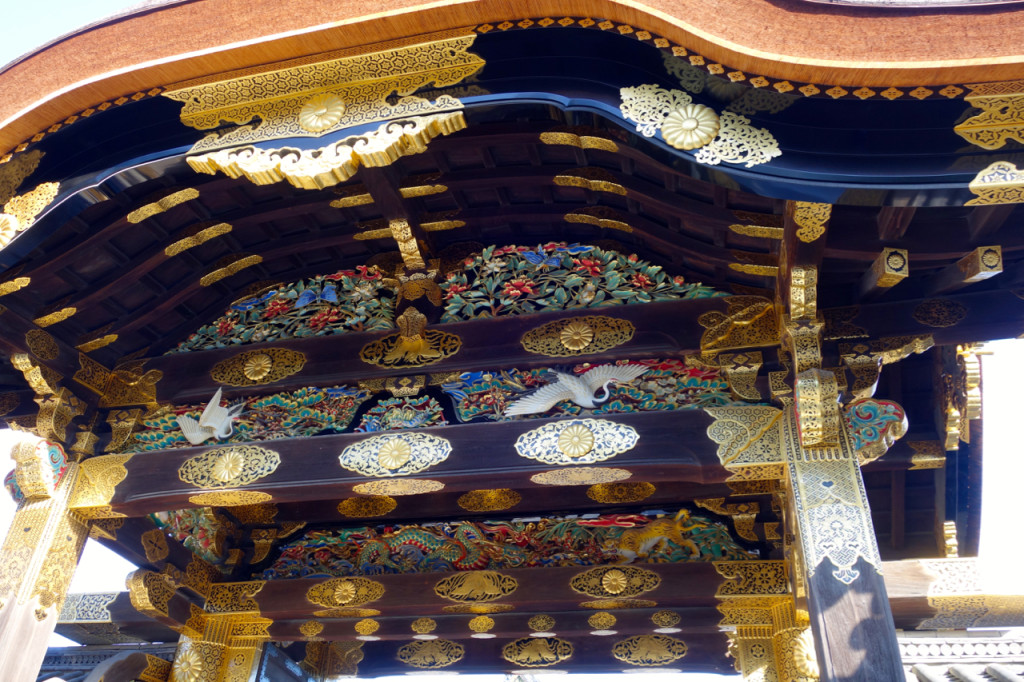
Once through the gates, there were dusty paths, carefully manicured trees, and a pond with three islands. One of the islands represents Horaisan, which I think is a symbol of beautiful treasure so perfect it is not accessible by mortals. We even saw mushrooms growing. The nearby Honmaru Palace is closed to visitors, but the grounds and gardens were also open for wandering. If you visit in late March or April it is said to be especially beautiful since there are over 400 cherry trees that blossom at that time, and there’s also a plum orchard.
After spending a lot of time exploring the grounds and getting some good views and exercise, I followed exit signs past a row of souvenir shops and restaurants.
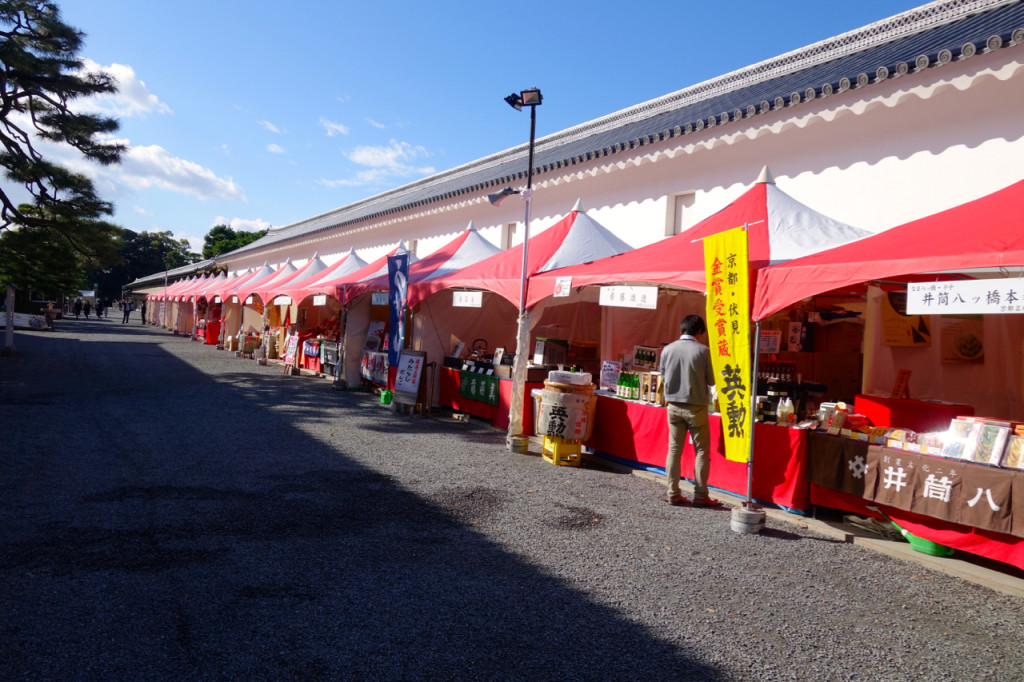
It led back to the main gate, and then back out to the street where we had entered from.
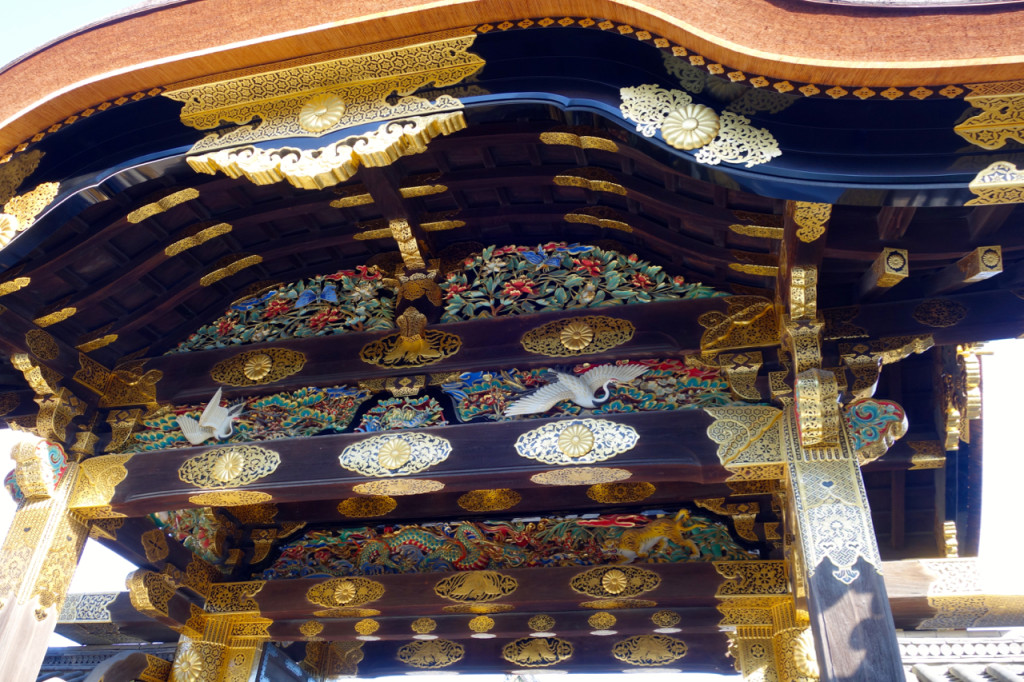
I was a little thirsty and hungry, so we went back to the shopping area in town for a late afternoon snack before returning to the hotel.
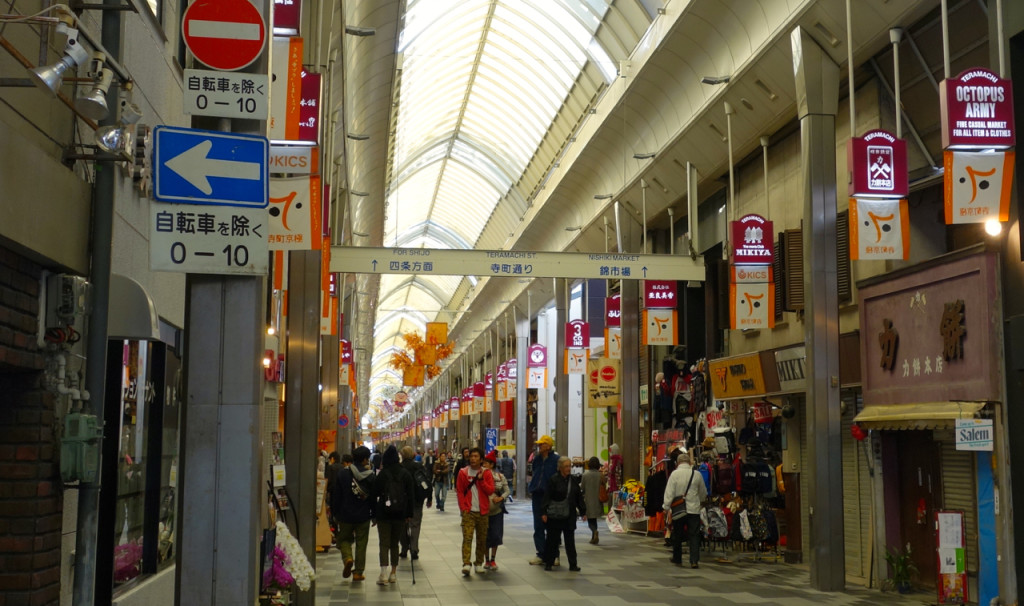
A coffee shop is not always just a coffee shop in Japan. There’s Moomin cafe, where solo diners can sip a beverage seated next to a huge life-sized stuffed animal so they don’t feel lonely (either the stuffed animal or the patron).
Then there are the super popular animal cafes. You pay a small cover charge, and once inside you can pet and play with the animals to your heart’s content. Then you can relax and enjoy a cup of tea and some biscuits, coffee or a meal. There are owl cafes, bunny rabbit cafes, bird cafes, and even a cafe that seems to have lizards and turtles. Cat cafes are so popular that there are even multiple guides on which ones are the best. US coffee shops seem sort of bland after all that, seeing that they just have…coffee.
Just off one of the main streets was a simple cafe with a garden courtyard inside.
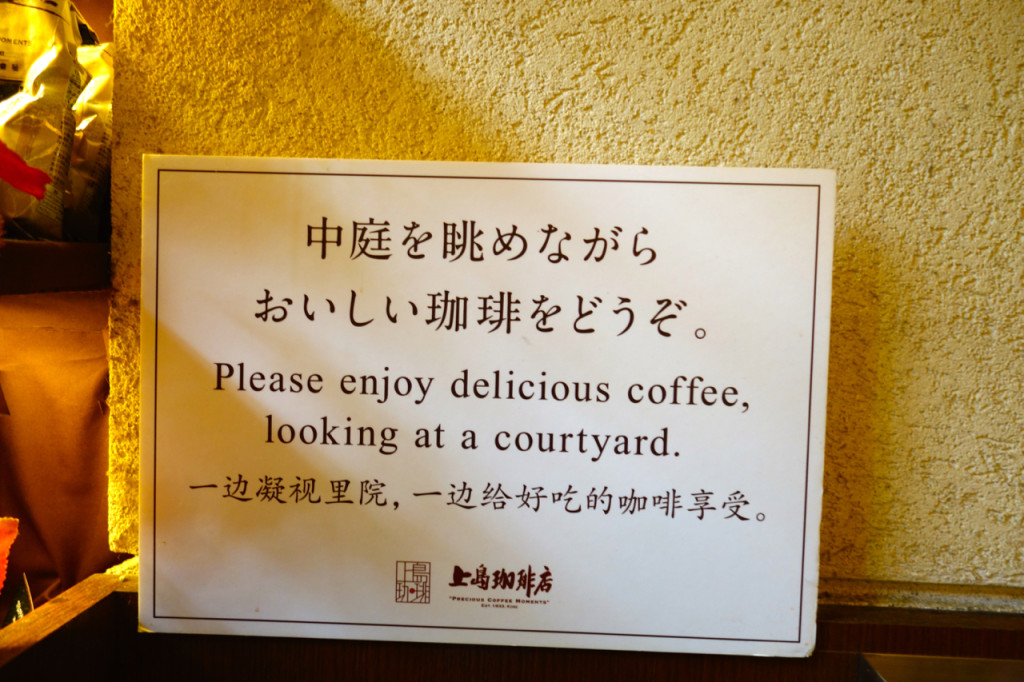
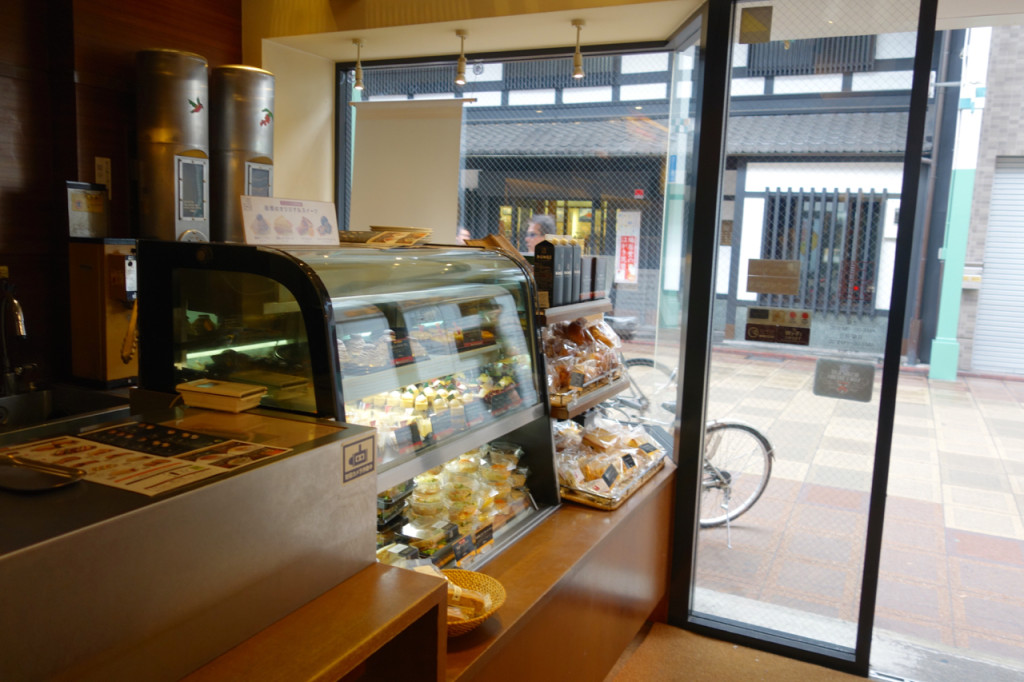
I selected a hot green tea with a yummy whipped ginger and honey topping, and my husband had coffee.
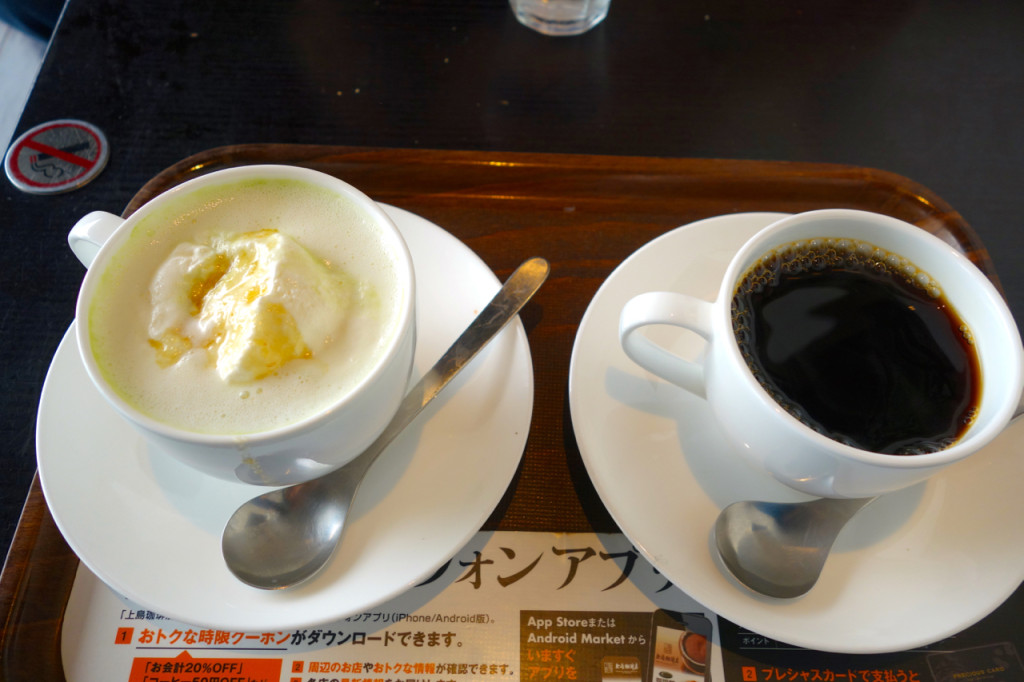
I scoffed at the idea that looking at a courtyard was any different than sitting in a regular cafe. However, after taking our drinks we found a place along the perimeter of the green and manicured courtyard, which I admit really was nice to look at instead of just other chairs and tables.
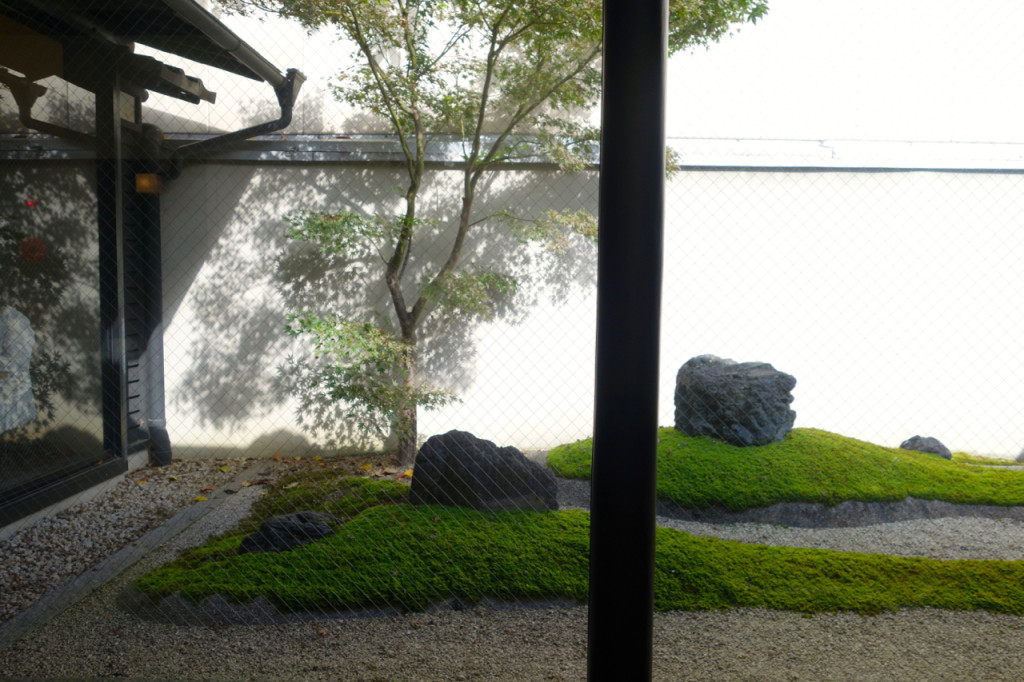
Back outside, I spotted a huge plush Pooh bear, and a Christmas-themed KFC. Kentucky Fried Christmas? I didn’t even know KFC had themes, but it was fun.
Remembering how good the food in the supermarkets is, I ducked into one to find a sandwich or two. Triumphant, I emerged with a box of sandwiches and a laugh.
I headed back to the hotel for a quick nap before dinner, and realized that my list of all the things I love about Japan keeps getting longer and longer…
Stay tuned: Room Service at the Ritz-Carlton Kyoto























KFC Christmas dinners are a huge deal in Japan.
Families race to reserve dinner sets and roast chicken in advance.
The banner in the photo says this KFC has started accepting reservations.
KFC Japan’s tactical marketing has lead to this culture, but Domino’s Pizza has been trying to challenge KFC recently.
Domino’s offers roast chicken delivery throughout December.
Christmas dinners are marketed as romantic occasions for lovers, and hotels compete to attract couples.
Christmas has almost become a second Valentine’s day for marketing purposes.
“Anti-Christmas” marketing targeting young single men is also popular these days.
The most interesting part of Japanese Christmas for me is the post-Christmas rush by every retailer to swap all decorations overnight. Customers show up for end-year and new-year shopping in drove on the 26th, so there’s no time to rest. All the trees and lights are taken down, replaced by traditional bushes and white/red decorations, accompanied by koto harp music.
Ah, the mystery about KFC Christmas dinners is solved. Hilarious, I had no idea that Christmas dinners in Japan were so hugely…romantically marketed. This is totally fascinating Penguin, thanks for sharing! 🙂